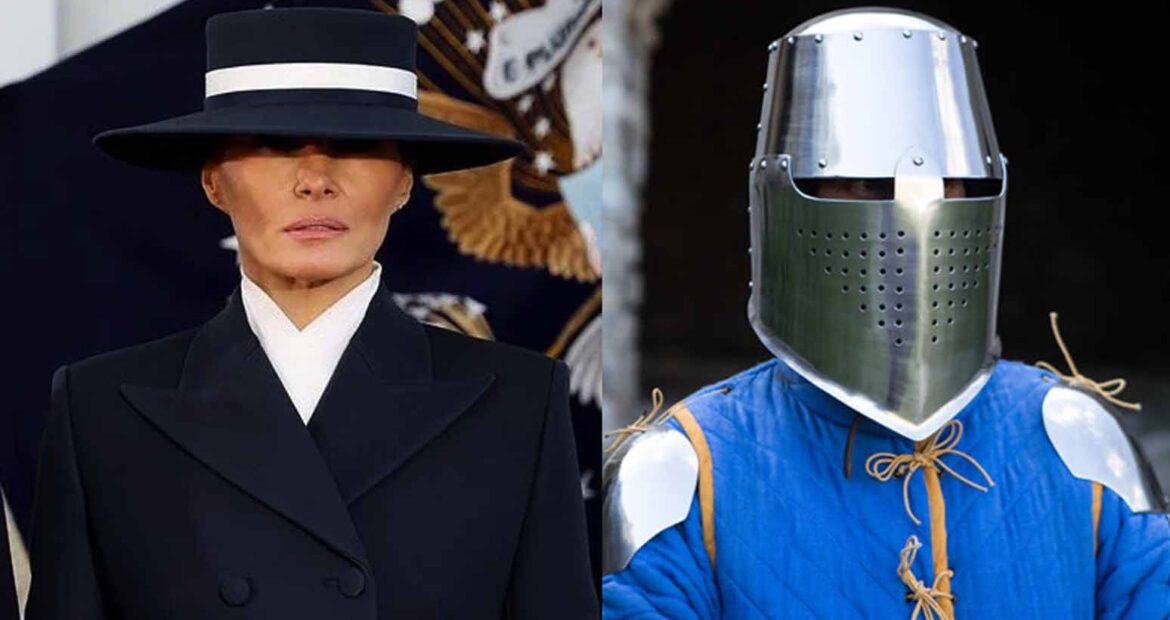In this modern era, style, fashion, and the communication of social politics through personal adornment have less to do with what people wear and much more to do with how.
Melania’s clothes and hat on Jan 20, 2025 were gorgeous, of course. Designed by Adam Lippes and Eric Javits, respectively, made beautifully and lovingly by hand, displaying stunning craftsmanship of the highest quality materials and perfect fit.
But even the most beautiful clothes will always take a backseat to how they are worn.
This is the difference between fashion and style.
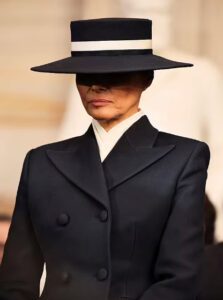
Chris Somadevilla photog, AP Pool, from The Irish Times
The way Melania wore her Inauguration Day 2025 ensemble — the hat most especially — was, to me, an astonishing display of protective armor.
But there was something more than protection going on.
Something dangerous.
A looming.
A boater hat has never seemed so ominous.
At that event, it wasn’t a hat; it was a medieval greathelm helmet.
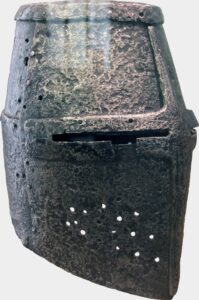
Deutsches Historisches Museum, CC BY-SA 3.0, Wikipedia
Greathelm’s took shape in the 12th and 13th centuries during the Crusades.
I’m not implying it was Melania’s intent to evoke that period or politics, for what I know of her, which is admittedly not much, those aren’t her interests.
I am suggesting she intentionally tapped into the aggressive aspect of the helmet and hat’s similar shape by how she decided to wear it.
A greathelm helmet completely hides the eyes and squares off the skull, heavily distorting the human silhouette, making it seem like something ‘other’, something scary.
Such distortion of the human form is very effective at intimidation in battle.
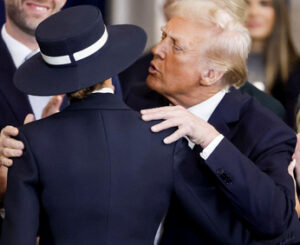
Pic from Reuters at Sky News
Given that Melania is generally fairly guarded, the hat-helmet worn level with her eye pupils ultimately felt more protective than aggressive.
But, still, a palpable feeling of aggression seemed on this occasion to be on a hair-trigger —
it was a “don’t anyone even dare” vibe.
“I am here, present, seriously doing my public duty during this solemn event, but I am not actually here, which my eyes might attest to, which no one is allowed to see. Don’t try to read me, don’t try to capture my shifting human emotions, don’t try to connect or get close”.
It did indeed make it difficult for President Trump to get close.
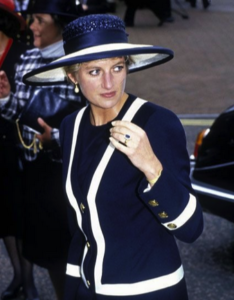
How Diana wore a boater. 1993.
From the original print publication displayed at www.princessdianabookboutique.wordpress.com
It’s hard to resist drawing comparisons with Princess Diana, firstly because Diana would wear boaters now and then, but also because both women carried out their duties under similar pressures, using fashion to communicate how they handled such pressures.
Perhaps they also communicated similar difficulties in their relationships with their husbands, through which their public duties flowed.
Diana rarely hid her enormous blue eyes under a hat to such a degree, even when, we now know, she was deeply unhappy. She usually allowed her vulnerability to be much more apparent.
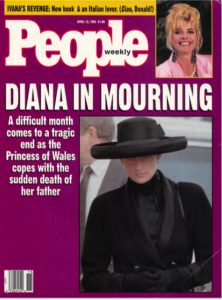
Although, this look from a 1992 People magazine cover showing Diana’s dark outfit and low-sitting hat worn to attend her father’s funeral feels more protective and echoes into the future.
And, with the juiciest of synchronicities, the cover includes a pic of President Trump’s first wife, Ivana, and coverline stating the ‘revenge’ of her new book and Italian boyfriend.
The circle of life is complete.
While we might like to believe that clothing is inconsequential, the truth is quite the opposite.
Most human communication is nonverbal, and clothing and accessories are powerful communication tools, whether or not we’re conscious about how we use them.
They scream silently.
